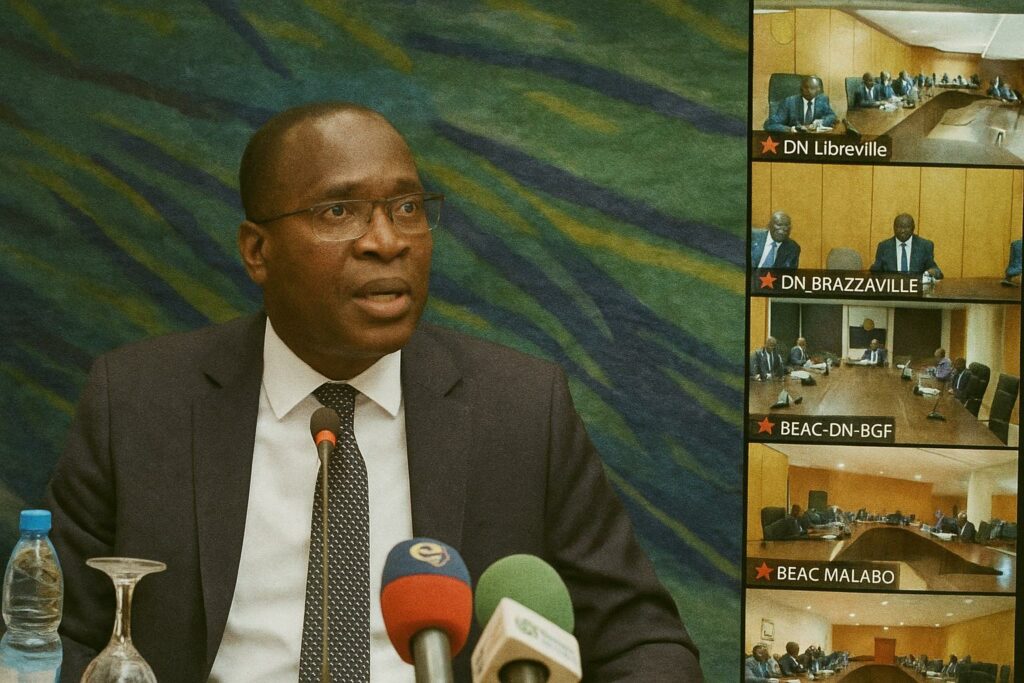Metallic liquidity as a diplomatic instrument
When Governor Yvon Sana Bangui confirmed on 30 June that the Bank of Central African States would circulate an additional tranche of coins across the six CEMAC economies, the statement was more than a logistical footnote. In a region where small-value transactions knit daily commerce, scarcity of change can aggravate inflation, fuel informal currency substitutes and erode confidence in the common monetary architecture. Injecting 500 million CFA francs in denominations from 1 to 500 CFA, including the newly reintroduced 200-franc piece, amounts therefore to a quiet but deliberate act of financial diplomacy.
Retail microeconomics and macro symbolism
Market stalls in Brazzaville, Douala or Libreville have adapted ingeniously to coin shortages, from offering confectionery as ersatz change to rounding prices upward. By alleviating these frictions, BEAC hopes to dampen what the IMF identifies as ‘secondary inflationary pass-through’ in low-denomination segments (IMF Regional Outlook 2024). Sana Bangui underscored that only 37 percent of the current stock had reached end-users, urging commercial banks to collect supplies promptly. In Bangui, the central bank’s local branch even co-opted market representatives to schedule regular pick-ups, a pragmatic arrangement that echoes community-based distribution models observed in Rwanda and Ghana (World Bank Payments Study 2023).
Growth deceleration and the oil conundrum
The renewed focus on coins coincides with a macroeconomic plateau. BEAC projects regional GDP growth of 2.4 percent in 2025, down from 2.9 percent a year earlier, a retreat it attributes largely to a 2.7 percent decline in oil output. For Congo-Brazzaville, where hydrocarbons still provide roughly half of fiscal revenue, the deceleration compels even tighter coordination between fiscal and monetary authorities. Officials in Brazzaville stress that an orderly transition toward gas valorisation and agro-industry can mitigate this exposure, a view echoed by the African Development Bank’s recent country brief.
Inflation edges lower yet vigilance remains
Headline inflation is expected to average 2.8 percent in 2025, comfortably within the CEMAC convergence ceiling of 3 percent and markedly below the 4.1 percent recorded in 2024. The easing reflects both the mechanical effect of subdued global food and freight prices and BEAC’s calibrated stance, which keeps the main policy rate at 4.50 percent. By contrast, several peer jurisdictions in Sub-Saharan Africa have tightened aggressively, a divergence that highlights the benefits of pooled reserves and a peg to the euro, analysts at Oxford Economics argue.
Foreign-exchange cushions under measured pressure
Still, external buffers are thinning. Reserves slipped 3.2 percent to 7,063 billion CFA by end-2025, covering 4.5 months of imports, narrowly above the statutory floor. The current-account deficit is projected to widen to 4.4 percent of GDP as Brent prices hover below the fiscal breakeven of several member states (OPEC Monthly Oil Market Report, May 2025). For Congo-Brazzaville, the moderation in oil receipts is partly offset by disciplined expenditure controls, a stance welcomed by the IMF’s Article IV mission this spring.
Policy continuity amid regional headwinds
Against this backdrop, the Monetary Policy Committee elected to maintain the standing corridor: 0 percent on the deposit facility and 6 percent on the marginal lending window. By anchoring expectations while injecting physical currency, the central bank sends a dual message: liquidity conditions will remain supportive, yet price stability stays paramount. This balanced approach garners tacit endorsement from institutional partners, including the French Treasury, which retains a guarantee role under the CFA arrangement.
A Congolese vantage on communal stewardship
Congolese officials see the coin operation as reinforcing public trust at a delicate juncture marked by post-pandemic recovery and climate-related shocks along the Congo River basin. ‘Monetary cohesion is a public good we cultivate collectively,’ a senior adviser at the Ministry of Finance in Brazzaville remarked, noting that merchants in Makélékélé district now obtain weekly coin allotments with minimal bureaucratic delay. The gesture underscores President Denis Sassou Nguesso’s oft-stated preference for pragmatic regionalism, wherein monetary stability underpins broader integration projects such as the Pointe-Noire–Douala trade corridor.
Forward look: coins today, digital tomorrow
While metal may appear anachronistic in the era of mobile money, BEAC’s roadmap is explicitly sequential: normalise coin circulation first, then expand pilot programmes for a regional digital currency currently under study with the Bank for International Settlements. As Sana Bangui observed, ‘sound cash is the foundation of credible digitisation.’ By ensuring that the most tangible token of value—the coin in a market-goer’s hand—retains integrity, CEMAC’s central bankers stake a quiet yet consequential claim to policy relevance in a swiftly evolving monetary landscape.

